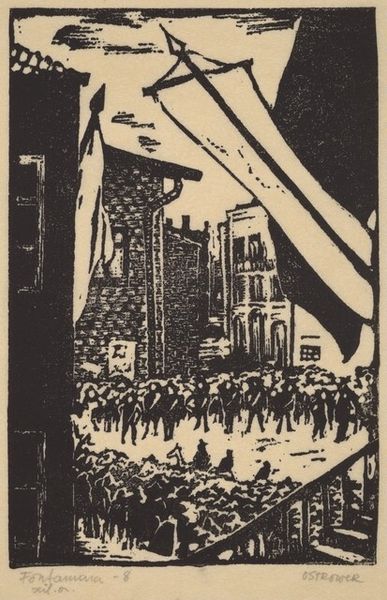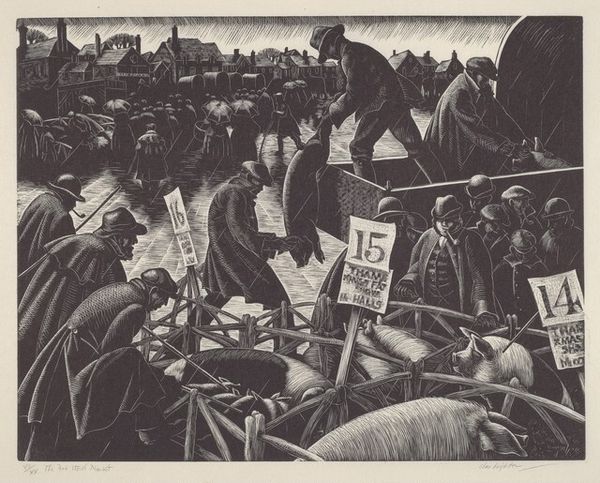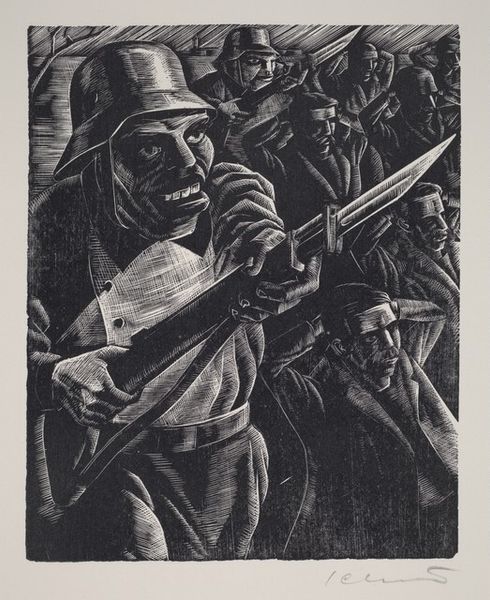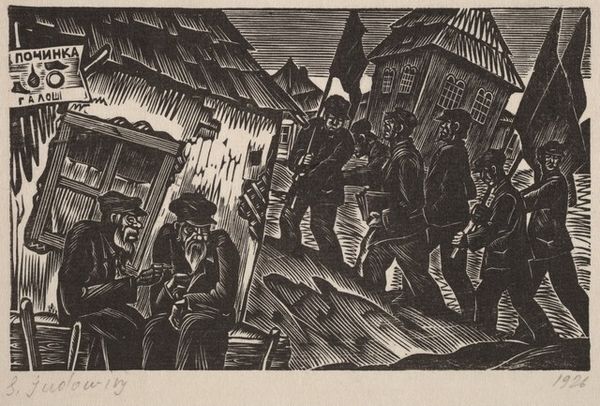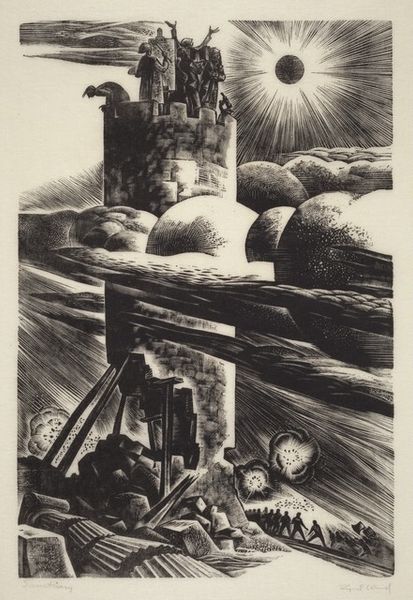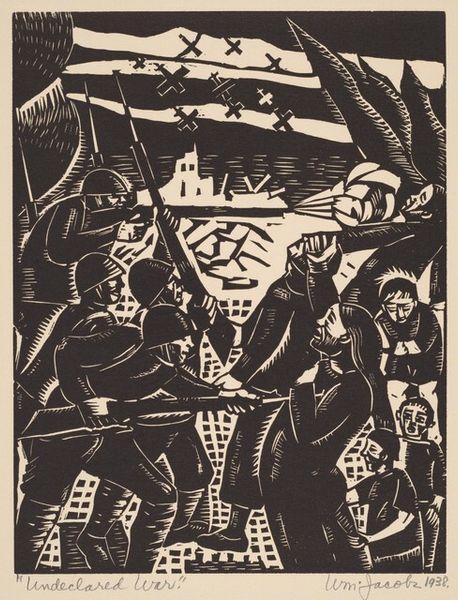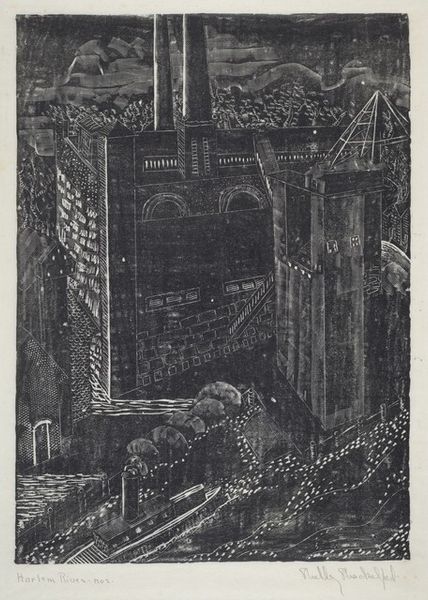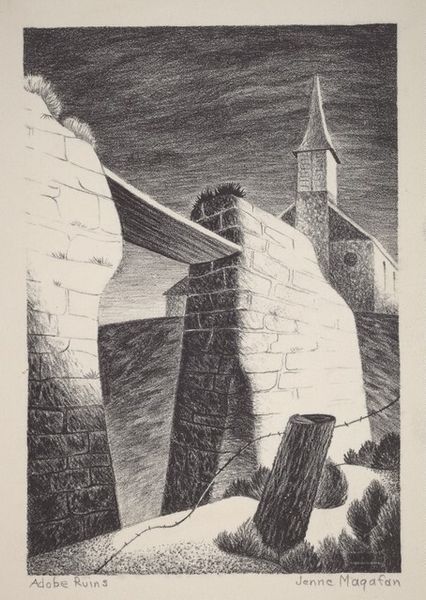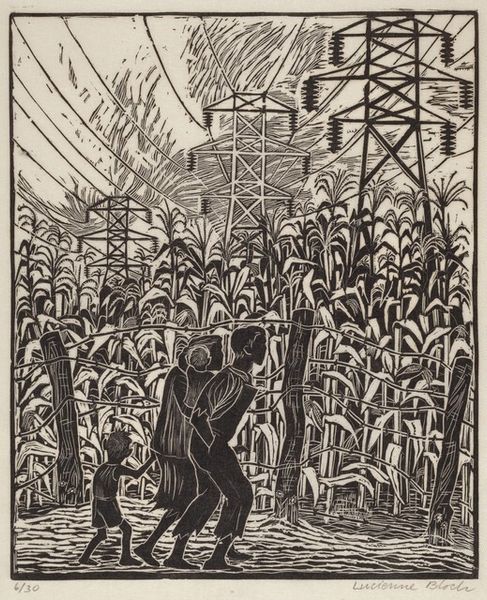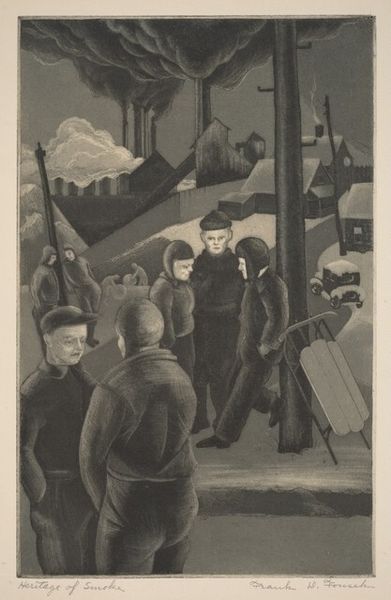
print, woodcut
#
ink drawing
# print
#
landscape
#
figuration
#
woodcut
#
mexican-muralism
#
cityscape
Dimensions: block: 203 x 127 mm sheet: 292 x 256 mm
Copyright: National Gallery of Art: CC0 1.0
Curator: I am struck by the density of this woodcut print. "Market Place Mexico," created by Henry J. Glintenkamp, around 1938-1940, it presents a bustling scene framed by a stone arch. What’s your initial response? Editor: The high-contrast black and white immediately conveys a feeling of tension, almost unrest. The scene feels crowded, and the thick, deliberate lines of the woodcut process enhance the weight of the subject. Curator: Glintenkamp, known for his work that often engaged with social and political issues, utilized printmaking—specifically the woodcut technique—which inherently lends itself to accessibility and distribution. Considering the time period, what could he have been trying to convey? Editor: Given the Mexican Muralism movement’s rise, I'd venture this is an engagement with Mexican social realities, particularly Indigenous and peasant life as expressed in art production. This imagery challenges power structures by prioritizing marginalized voices and documenting everyday existence for mass distribution and awareness. The composition almost traps its inhabitants within the city, arch, and frame, emphasizing the political constraints they face. Curator: Let's focus on materiality. The roughness of the wood, the deliberate cuts, create a texture that speaks to labor, not just in its making but perhaps mirroring the labor represented within the market. There is a lack of refined polish, emphasizing accessibility to a wider audience rather than appealing to high art collectors alone. Editor: Exactly. We also need to consider the economic landscape—artists during this era sought alternative materials for art production due to socio-economic disparities, but print also served as a tool for empowerment. Woodcut allowed images to circulate beyond traditional gallery walls, meeting its audience within political rallies, local meetings, and public forums, making "Market Place Mexico" less of a luxury item, more of a manifesto. Curator: Reflecting upon our discussion, I find myself drawn back to the choice of medium, and the act of carving, itself a forceful act of resistance and exposure. Editor: And I’m left considering how such works serve as powerful reminders to question systems of power that directly impact on the lived experience and human rights.
Comments
No comments
Be the first to comment and join the conversation on the ultimate creative platform.
